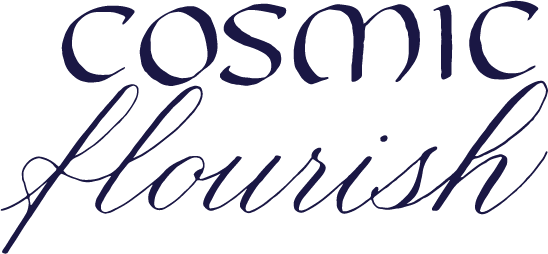Adolf Bernd’s Painted Letters
In the fall during an Inkpots Board Meeting, someone mentioned Adolf Bernd’s painted letters in passing. For some unknown reason I volunteered to teach about Bernd and his work at a spring guild meeting. I’m not sure what possessed me to do it. I have a fever dream of seeing images of his work years ago, but I’d never studied him or really heard of him until that moment.
The joke is on me because I didn’t realize how challenging this would be. There is a lack of information about Adolf Bernd and his work and what is out there is not easily accessible. I knew Peter Thornton has compiled two books of Bernd’s work in the past, so he was my first email. Peter was so helpful in sending me images and making a suggestion of what to discuss in my presentation. Unfortunately for me, even Peter no longer has copies of his book available. After scouring the internet for copies, I put out a call on all known calligraphy platforms I’m a part of with no luck. My calligraphy mentor and I were talking one day and I learned he has a copy of the first book, which he loaned me.
After months of research and compiling information I am no closer to being a Bernd expert, but I am a curious woman with some new insights. I wanted to gather everything I learned into one place in hopes that it might help the next eager person who wants to do a deep dive into Bernd’s life and work. So much is still unknown, but here is what I’ve learned.
Adolf’s father, Gustav Adolf Bernd
Bernd is a German artist, born in August 1909. He was surrounded from an early age by art and artists, his father being a fairly well known sculptor.
Upon completing school, Bernd enrolled as a guest trainee at the Masters Art. He later opened his own studio and went on to win numerous national and European awards in the field of advertisement design.
It was not until 1971, in his early 60s, that Bernd channelled his interest from purely commercial design to work that drew more on his own imagination and passion for color. The result was his letter paintings which would absorb him for over twenty years until his death in December 1994.
I want to reiterate his painted letters were done for his own enjoyment in his retirement and were probably not commissioned like his professional graphic art work. I think this is an important reminder that it’s never too late to start and that there is so much value in developing your creative practices.
Bernd was fascinated by unusual letter shapes found on family crests, old coins, historical manuscripts, medals, signs of the zodiac and numbers. He developed his letter paintings from these interests. It is said, Bernd also enjoyed the flowers his wife brought in from their garden, which may have inspired his color choices and how the colors relate to each other. Bernd’s sense of color had a mysterious subtle quality due to the tones and textures achieved by working in watercolor.
The Klingspor Museum in Offenbach, Germany has many Bernd pieces in their collection. This is a museum specializing in the art of modern book production, typography and type.
The elements of Bernd’s painted letters include subtle tonal colors, white interlinear lines and geometric patterns in letter strokes and surrounding areas.
Peter pointed out how Bernd’s compositions had an underlying tension within the page achieved by his adjusting the lines, placement of shapes and negative spaces into unexpected patterns. Many pieces used the gradation of the watercolored areas as a design element, causing the backgrounds to have lively variations in the colors’s depth.
Bernd was to say about his own work in 1988: “I take (although not always exclusively) one letter as the focal point, and by combining it with other forms, shapes and colors, attempt to create something new and harmonious. By doing so I bestow on the letter a rank seldom attributed to it because of its normally functional role in life.”
As calligraphers we already consider both the beauty and function of letters. This is why I was so drawn to studying Bernd, because his work allows us to see letters in a new way. As calligraphers this is especially poignant.
Peter believes that Bernd created his paintings by first outlining everything in pencil and then carefully painting up to the lines. In early pieces Bernd seems to have erased the pencil lines, but became less concerned and they remain faintly visible in later work.
A number of Bernd’s paintings are quite large at 18” x 24”, an important reminder not to focus too much on tempting details.
Another modern calligrapher I reached out to in my study of Bernd was Gemma Black, a calligrapher and text designer from Tasmania. Gemma recently retired from thirty seven years of active in-class and online teaching at the beginning of 2024.
One of the projects she is well known for is the Apologies that she worked on for the Australian government to the Aboriginal people. Most recently she’s completed The Declaration of Human Rights in a powerful project. You can find more on YouTube and I encourage you to look that up here.
In her years teaching she taught a wide variety of classes from foundational and blackletter to art deco lettering and Hermann Kilian lettering. We were fortunate to have her teach the Inkspots in person in 2018, Pre-Copperplate Italic and Ligatures & Ampersands. Gemma has also taught classes about Adolf Bernd’s painted letters. Which made her a great resource.
In examining Gemma’s work, consider her color choices, the geometric patterns she created, and how she used white negative space to benefit her layouts. She was able to take elements of Bernd’s work and make it her own. I noticed she often opts for less tonal colors and chooses ones that are more saturated.
When asked about using frisket or resist to keep the crisp white lines and letter shapes, Gemma said, “You are not the first to ask this question. Adolf Bernd never used resist and neither do I. Most of my watercolour colleagues when letter painting, don’t either. The technique I use is twofold “paint to the line and leave a moat ."
She said, "The most direct way to work like Bernd is the path of least resistance. Pun intended. I have always recommended Bernd’s way. Discipline and skill. Resist is for crossing borders with paint. I think people believe they will get a better result, but you don’t and it is slower."
I was rewatching a class she did in 2021 on the Fibonnaci sequence and she used these same techniques. She reiterated the importance of leaning on discipline and skill rather than trying to short cut with the resist. I attempted to use a masking fluid marker in some of my first attempts and I agree with Gemma that it won't give you the results you think it will.
Yogi Grunwald shared about her experience studying Bernd’s painted letters with Peter Thornton in a blog post. I found her descriptions so helpful. She noted that Bernd did not do things symmetrically, always adding interest by creating a cut out or extending a block or line past others. I loved her description of a nine tile exercise to practice color theory. Starting with a pure color in the middle, adding a touch of a second color to the middle right tile, then adding more and more of the second color moving counterclockwise, until you end up with a pure second color in the bottom right corner.
As mentioned before a major characteristic of Bernd’s work was his tonal colors. In my study this caused a major realization that you cannot talk about Bernd without talking about color theory. Exercises like the one Yogi mentioned are so helpful in that practice of mixes colors and learning how to work with the color wheel.
A theme I noticed with students who have studied Bernd with Peter is that they are often asked to bring an organic item from nature (fruit, flower, leaf, twig, rock, etc.) so they could dissect the colors and try to reproduce them.
I saw this played out when I found photos Yukimi Annand shared from a workshop with Peter. She created a 6x6 grid of squares to reproduce colors found in the leaf she brought. She used yellow ochre, paynes grey and ivory black. Look at the subtlety of her palette, probably achieved by diluting with water. You can also see a number of exercises that practice not only different squares and lines, but also creating various color palettes. Both are exercises I would encourage you to try.
Yukimi’s final letter is a beautiful example is taking the elements of Bernd’s work and making it your own. I love the gradation within each square, which is something so special about working with watercolor.
One other individual I found helpful was Ruth Korch who wrote a blog post about creating a painted letter from start to finish. One tip she shared that I thought was especially helpful was keeping a fine brush and bottle of Dr Martins Bleed Proof White Ink for little touch ups. If you opt for using Bernd’s techniques for painting this is a great idea.
I’m not going to dive into this here, but as I mentioned color theory above, I want to reiterate the importance of knowing the basics so you can use them in your own painted letters. The same goes for understanding watercolor basics. If you don’t already have this skill it can be helpful to look up some very basic watercolor tutorials.
I hope this inspires you to get curious and give yourself permission to play around with creating your own painted letters.

